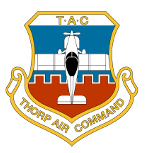After testing with the jet at a #37 drill bit it appears to be slightly rich when I have a 1500DA and 75*F so I have to lean out just slightly on WOT for take off. The last couple of days we have had a -500 to -900 ft DA and only low 30's. When I took off in climb my CHTs stayed mid 300's but my rear 2 EGT both rose to high 1400's and just broke 1500. It was climbing fast and my trim wasn't aligned so while I was waiting for the slow electric trim to balance me out I just reduced throttle slightly. I think that pull back in power reduced my mixture too much (no more economizer). I pushed full throttle and the EGTs came right down. So there is a change in front/rear egt that depends on throttle position.
My fronts were still running in the high 1200's. So it seems like I have a mixture distribution issue between front and rear cylinders. The carb gasket has been changed along with the intake gaskets. The intake pipe hoses were checked and all still tight. I think it would be a large coincidence to have equal intake leaks on only the 2 rear cylinders that has stayed the same with gasket changes.
Plugs were checked and cleaned. I did the ignition stress test at altitude and everything was just as savy analysis listed as normal. I swapped plugs front to rear and the issues still remain based on cylinder and didn't follow the plugs.
In straight and level cruise when I pull back the throttle to settle in at 2500 rpms the egt's balance out within 50-80* of each other with the fronts almost dead on and the rear almost dead on. When leaning yesterday in the cool temps my #3 was leanest at 1480*.
I was reading about an airflow disturbance with 0320 that causes rear cylinders to get less fuel and it's fixed by lycoming SB-258 airflow adapter. I don't see much difference between the carb outlet, gasket and then sump inlet which is the issue for the SB on the 320. The only other thing I could think is the aerator drill holes in the sides of the main nozzle that I do not have. I think this was also another issue with an MA4 carb and not my MA3. Does anyone have the hole size and locations so I could drill mine to see if it makes any change?
So far with a #37 hole I think I'm pretty rich although the numbers on the egt say otherwise. Should I go to yet another size larger drill for the main nozzle and see? It just frustrates me that my cherokee (with 0320) I can go full throttle in any weather with full mixture an no issues lean or rich no matter 100* F or 30* F outside.
I'm building a cable for my JPI 700 in order to download and analyze the cht/egt graphs.
Most places say you want 250* F rich of peak for WOT on take off although based on egt I'm not there and with the high DA and hot days it bogs with not quite that much fuel and I have to lean it back to near max power egt temp.
Thanks for any help in smoothing out this minor issue for me. I get tired of always messing with mixture and want it to be like my piper: push the black knob and just fly the plane.

Jeff
Other carb thread if anyone needs an update:
viewtopic.php?f=19&t=8153&start=15






